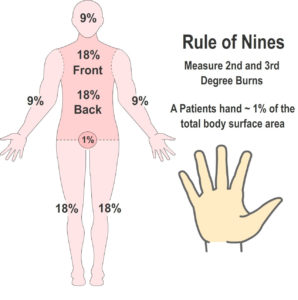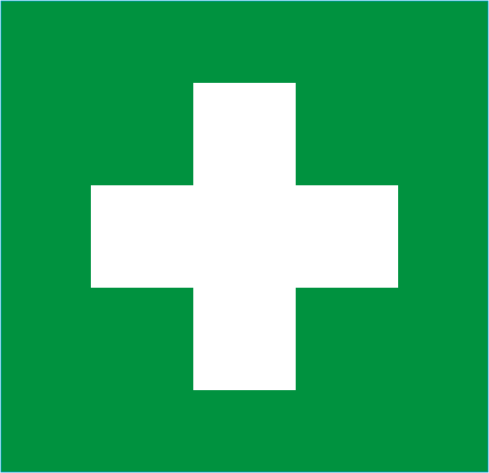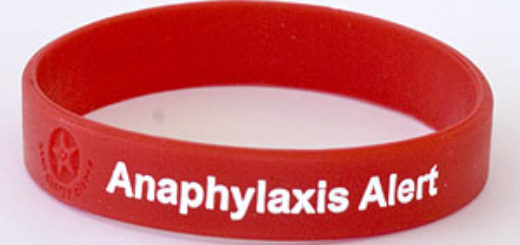How to assess a burn or scald

One method of assessing a burn is to use the first aid mnemonic SCALD.
SCALD provides a framework for thinking about and assessing victims of burn injuries.
Size
Correctly estimating the size of the burn is important. Burn area is measured as a percentage of total body surface area.
There are two techniques which can be used:
- Palm of hand: roughly speaking, the palm of the victim’s hand will be approximately 1% of their body surface area
- Rule of nines (see image)
Burns in the region of 10% of body area are serious and may produce severe shock.
Cause
Find out what has happened to cause the burn. Could there be any other types of injuries?
Some types of burn may be associated with other problems. For example chemical burns may cause breathing difficulties. Electrical burns may result in a cardiac arrest due to the electrical activity within the heart being disrupted
Age
The age of the victim is very significant. On average burned children and elderly patients are more vulnerable to shock. Children and young adults may survive burns of 20%, whereas the elderly and infants may die from as little as 10%.
Location
The location of the burn is another important factor. Burns to the face or neck could cause airway obstruction.
Depth
Different systems for classifying the depths of burn exist around the world.
One system is superficial, partial thickness or full thickness (find out more by reading our free guide to classifying the depths of burns). Superficial burns are usually more painful than deep ones as nerve endings are destroyed in full thickness burns.






I really learned a lot from the quizzes
very good
great
Useful information
THANKS